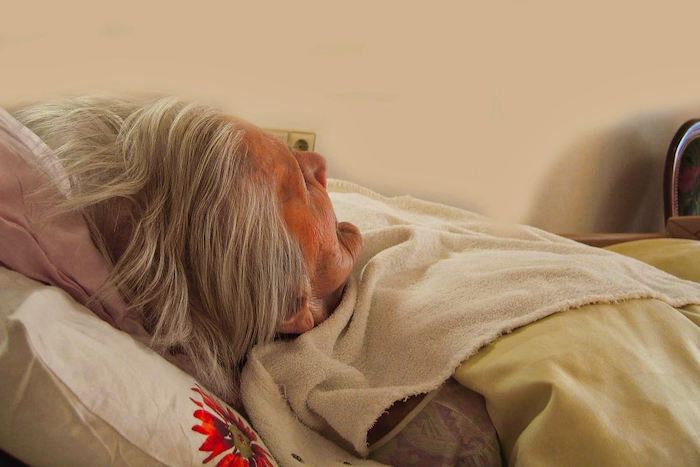I had barely seen my brother in decades, but when time was short, he let me in.

By Michelle Friedman
The message I had dreaded for years appeared on my phone: “Looking to find the sister of my patient, Jay Friedman.”
My ensuing phone conversation with the doctor brought ominous news. My 65-year-old brother, Jay, had advanced pancreatic cancer. He and I grew up together in Divine Corners, N.Y., a hamlet in the Catskills, raised by secular Holocaust survivor parents who stumbled into raising chickens. Their histories, coupled with the isolation and poverty of the farm, rendered my father brutal, especially to his only son.
I am the only family member with whom Jay maintained contact for the last three decades. Over that time, we communicated exclusively through email and cards I sent to a post office box. Despite working a quarter century in I.T. for the local school system, my brother did not own a cellphone. His doctor found my number via Google.
Jay was admitted to a fancy Seattle hospital where I called him via the landline next to his bed. His voice sounded weak, plaintive.
“Jay, I’ll come,” I said. “Let me be with you.”
“I don’t know,” he said. “My house is a mess.”
“I can stay in a hotel.”
“I’ll let you know.”
I panicked. I knew the prognosis was dire, but my brother’s lonely life cast an even darker shadow.
The hospital discharged Jay with a bag hanging from his chest to drain bile from his tumor-blocked liver. A few days later the doctor called again. Jay wanted my help.
I caught a flight to Seattle, picked up a rental car and drove around Puget Sound to a town in Kitsap County. Before entering Jay’s house, I muttered an ad hoc prayer for strength. Following the sounds of his weak voice through the maze of papers, boxes and computer parts, I found my brother lying on the couch. The disease had consumed him, leaving his body whittled, skeletal. Only Jay’s voice sounded familiar, a gravelly baritone.
“Thank you for coming,” he said. “I’m sorry I was snappy over the phone.”
The blanket wrapping my brother was full of holes. A brown crust covered his kitchen floor and counters. Jay drank tea with lemon in the one glass he possessed. Not owning a kettle, he boiled water in an old pot.
I brewed tea and baked a piece of chicken. After a few sips of liquid and child-size bites of food, Jay felt full. He slowly climbed the stairs to the single bed in his bedroom. The sheets hadn’t been changed in months. All I found in the closet was a cotton duvet cover that I recognized from the farm where we grew up. The faint smell of the detergent and crisp lines from our mother’s iron told me Jay had never used it.
Retreating to a Best Western hotel two miles away gave me guilty relief. It was no palace, but it was clean and orderly.
In the morning, the doctor outlined my brother’s stark medical options. Surgery was out. Jay could pursue radiation or chemotherapy, but neither was likely to yield much in terms of quantity or quality of life.
Jay made his choice in seconds — no aggressive medical intervention. The focus shifted to palliative care at home.
He didn’t have much time, weeks. How was I to start a conversation with him about his death? I knew he took pride in his money management and had saved a lot (though I had no idea then how surprisingly much), so that’s where I started.
“Jay, have you thought about what you want to do with your money?”
“Yes, I’ve thought about this a lot. I want to give it to Planned Parenthood.”
“All of it?”
“Yes.”
His calm answer startled and pleased me. Throughout our decades of sparse contact, Jay stayed vague when it came to his personal opinions.
“Jay, that’s amazing! How did you come to this decision?”
“There are too many people in the world, and I believe that people should have autonomy over their own bodies.”
I sat in silence thinking about my brother’s autonomy, the little boy overwhelmed by our rageful father, the awkward teenager who wanted to join the Navy to get away but lacked nerve. My practical mind kicked in. “Jay, do you know a lawyer?”
Once again, he surprised me. “Yeah. One of the teachers I know went to law school at night. He’s a good guy.”
Jay had no contact information for the lawyer, but I found him through the school. He answered my text within minutes and got to work preparing the necessary papers.
By the next day, Jay could no longer crawl up and down the stairs and spent most of his time in his bedroom. We moved the mattress to the floor in case he rolled off during the night. I pleaded with hospice to fast-track Jay onto their service, and soon a nurse arrived and taught me how to dose the medication: morphine for pain, Haldol for nausea and Lorazepam for anxiety. Each floated in a medicine-dropper-topped bottle so that liquid relief could be applied to the inside of the patient’s cheek.
Jay’s condition deteriorated quickly, and I no longer retreated to the Best Western. My first night in Jay’s house, I slept downstairs on the sofa. The next night, I worried that I wouldn’t hear his whimpers, so I moved to the floor next to his mattress. My younger brother’s vulnerability pierced me; he was the innocent little boy on the farm who trusted me. I cried, silently.
When he no longer ate or drank, I repurposed a medicine dropper to drip orange juice and seltzer onto his parched lips.
The lawyer met privately with Jay and later told me of his firm wish to be cremated.
A clutch grabbed my heart. Jewish law, which I follow, prohibits cremation. “Can I at least get Jay’s ashes so that I can bury them according to our faith?”
“Yes. I think that will be OK.”
“We haven’t talked about this, but I’m wondering if you are part of a religious tradition?”
“I am. The Church of Jesus Christ of Latter-day Saints.”
His answer bolstered me, given what I was about to request.
“Can I ask you one more favor?”
“Sure.”
“When the time comes, I want to do a Jewish ritual washing for Jay. It’s called a tahara. It means purification. I’ll need help; it’s too hard to do alone.”
“Of course. Call me when you need me.”
The days passed in a kind of waking dream. Jay talked on and off, disclosing struggles of all kinds. He liked hearing stories about Divine Corners, how we played in the snow and explored the brook behind the coops. I emptied his drainage bag and changed his adult diapers.
“This is disgusting,” he said.
“I’m fine,” I said. “I’m here for you. There’s nothing else I want to do.”
As our mother did when we had fevers as children, I gave Jay a sponge bath and changed his worn pajamas to a clean set.
Jay quietly slipped away. He told me that his dream was to buy a house on a lake with a few acres of land.
“That’s such a nice idea, Jay,” I said. “I love you.”
“I love you too.”
And then I made a plea I knew people have uttered for millenniums. “Send me a sign, Jay. Please send me a sign from the other side.”
Early Thursday morning I woke up inches from my brother to find him gone. No labored breathing, no death rattle. His skin had cooled, his limbs stiffened.
When the sky was fully lit, I called his friend, and we performed the tahara. We removed Jay’s pajamas, removed the drain and bag, all the while using a clean sheet to keep his frame covered and dignified. I repurposed the battered teapot to pour water over his body, starting with his head and moving to his feet. We toweled him dry, dressed him in long underwear and wrapped him in the duvet cover from our childhood farm. The work felt tender, holy, a last act of intimate kindness.
The mortuary people came and removed Jay’s body. At 6 o’clock I boarded the van for the airport. Only one other person got on, a white-haired woman in a sweater set. I saw that she bid a sorrowful farewell to the man seeing her off. She sat a few rows behind me. Drizzle and traffic caused delays, but our elfin driver navigated the trip and asked us which terminals we needed.
“American,” she said, turning mournfully in my direction. “It’s a sad trip. My brother is dying of brain cancer in Florida.”
“United,” I said, and to her: “I just left after taking care of my brother, who died this morning. I hope you get there in time.”
We reached across the aisle and held hands. Jay had made good on his sign.
Complete Article ↪HERE↩!






